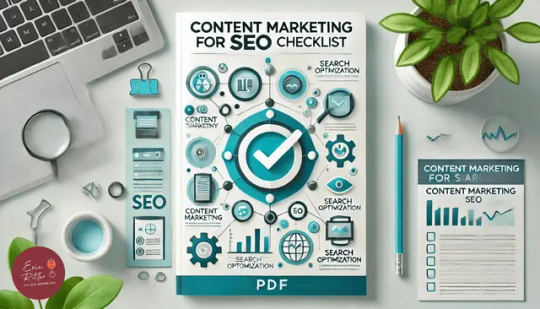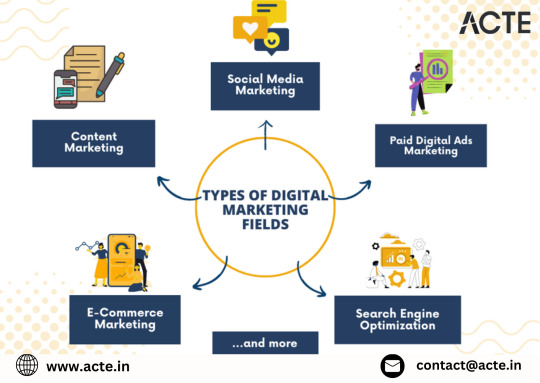#data driven ux
Explore tagged Tumblr posts
Text
The ultimate guide for websites to avail of data-driven UX is a comprehensive resource for businesses seeking to optimize user experiences. It covers strategies for collecting and analyzing user data, implementing data-driven design principles, and leveraging insights to enhance website performance. This guide empowers businesses to create user-centric websites that drive engagement and conversions.
1 note
·
View note
Text
10 Essential Digital Marketing Tips to Boost Your Business in 2024
In today’s rapidly evolving digital landscape, businesses of all sizes must stay up-to-date with the latest marketing strategies. The internet has changed the way consumers interact with brands, and as we approach 2024, mastering digital marketing will be more critical than ever. To help you stay competitive and drive meaningful results, here are 10 essential digital marketing tips that will elevate your business in the coming year.
1. Optimise for Voice Search
With the growing popularity of voice-activated devices like Amazon’s Alexa, Google Assistant, and Apple’s Siri, voice search has become a key component of how people find information online. In fact, it's expected that over 50% of all searches will be voice-driven. Unlike traditional text-based searches, voice searches tend to be more conversational and long-tail.
To optimise your website for voice search, start by incorporating natural language into your SEO strategy. This means using question-based keywords that reflect how people speak, such as “Where can I find the best digital marketing tips?” Additionally, focus on featured snippets and providing concise, relevant answers, as these are often used by voice assistants to respond to queries.

2. Leverage Artificial Intelligence (AI) in Your Campaigns
Artificial Intelligence is transforming the way businesses approach digital marketing. From chatbots to data analytics, AI enables companies to better understand customer behavior, predict trends, and create highly personalized marketing experiences. AI-driven tools can automate tasks like email segmentation, content recommendations, and customer service interactions, allowing businesses to save time while improving engagement.
For example, AI-powered chatbots can enhance customer experiences by providing instant responses to common inquiries, even outside of business hours. AI can also help businesses optimise their ad campaigns by analysing large amounts of data and suggesting improvements based on performance.

3. Prioritise Video Marketing
Video content is now an indispensable part of any digital marketing strategy. By 2024, it’s estimated that video will account for 82% of all online traffic. This makes video marketing one of the most effective ways to capture your audience’s attention. Whether it’s through YouTube, Instagram Stories, TikTok, or live streaming, video allows you to engage customers in ways that text or images simply can’t.
To maximise the impact of your video content, focus on creating short, engaging videos that are informative and entertaining. Live video is also becoming more popular, with platforms like Instagram and Facebook offering live streaming capabilities that allow you to interact with your audience in real-time. Demonstrating your products or services, hosting Q&A sessions, or sharing behind-the-scenes content can help build a more personal connection with your audience.

4. Collaborate with Social Media Influencers
Influencer marketing is no longer just a trend—it’s a powerful tool for businesses to increase brand awareness and drive conversions. By partnering with influencers who have a loyal following, you can leverage their credibility and reach new audiences. In 2024, micro-influencers (influencers with smaller, highly engaged audiences) are expected to play a more significant role, as they often have more authentic interactions with their followers compared to larger influencers.
When selecting influencers to collaborate with, ensure they align with your brand’s values and target demographic. Authenticity is key—today’s consumers can easily spot a partnership that feels forced or inauthentic. Focus on building long-term relationships with influencers rather than one-off promotions for more meaningful engagement.

5. Enhance User Experience (UX) on Your Website
User experience is central to the success of any digital marketing strategy. A poorly designed website can drive away potential customers and negatively impact your search engine rankings. Google places a strong emphasis on Core Web Vitals, which measure aspects like page load speed, interactivity, and visual stability.
As we move into 2024, it’s essential to ensure that your website is optimised for both speed and mobile friendliness. More than 50% of web traffic now comes from mobile devices, so if your site isn’t mobile-friendly, you could be losing a significant portion of your audience. Focus on providing a seamless, intuitive experience with easy navigation and fast load times to keep visitors engaged.

6. Master SEO: Focus on High-Quality Content
Search Engine Optimisation (SEO) is a long-standing digital marketing technique that continues to evolve. As Google’s algorithms become more sophisticated, the emphasis has shifted from keyword stuffing to creating high-quality, informative content. In 2024, businesses should focus on producing valuable, long-form content that addresses the needs and pain points of their audience.
To improve your SEO, conduct thorough keyword research and create content that provides in-depth answers to commonly asked questions in your industry. Use internal linking to guide visitors to other relevant pages on your website and ensure that your content is updated regularly to remain fresh and relevant.

7. Invest in Paid Advertising
While organic reach is still valuable, the rise of paid advertising offers a more direct way to target specific audiences. Platforms like Google Ads, Facebook, and Instagram allow businesses to use highly targeted advertising to reach potential customers based on demographics, interests, and online behaviour.
In 2024, consider experimenting with a mix of search ads, social media ads, and display ads to diversify your strategy. Retargeting campaigns, which focus on users who have already visited your site, are particularly effective at converting potential customers who didn’t purchase their first visit.

8. Use Email Marketing to Nurture Leads
Email marketing remains one of the most effective ways to nurture leads and maintain customer relationships. In 2024, personalisation will be key to running successful email campaigns. Use behavioural data to send personalised emails based on your audience’s past interactions with your brand. Whether it's a product recommendation, an abandoned cart reminder, or a birthday discount, personalising your emails can significantly improve open and conversion rates.
Additionally, focus on building your email list organically and create engaging, mobile-friendly templates that grab attention. Incorporate dynamic content that adapts to the recipient’s preferences to make your emails more relevant and engaging.

9. Incorporate User-Generated Content (UGC)
User-generated content (UGC) is a powerful form of social proof that can influence purchase decisions. Customers are more likely to trust the opinions of their peers than traditional advertising. Encourage your customers to share their experiences with your products or services on social media, and showcase UGC on your website and marketing channels.
UGC can take the form of reviews, testimonials, photos, and videos from customers. By featuring authentic content from real users, you can build trust with potential customers and foster a sense of community around your brand.

10. Utilise Data Analytics to Drive Decisions
Data analytics is the foundation of a successful digital marketing strategy. By tracking the performance of your campaigns, you can make data-driven decisions that improve your ROI. Tools like Google Analytics, social media insights, and marketing automation platforms can provide valuable information on how your audience interacts with your content, website, and ads.
In 2024, focus on real-time analytics to track user behaviour and adjust your marketing strategies on the fly. Use data to identify trends, test new ideas, and continuously refine your approach to maximise results.

Conclusion
Digital marketing is an ever-changing field, and staying ahead of the trends is essential for business growth. By incorporating these 10 essential digital marketing tips, you’ll be well-prepared to navigate the challenges of 2024 and beyond. From optimising for voice search and embracing AI to mastering video marketing and enhancing your SEO efforts, each of these strategies will help you boost your business and stay ahead of the competition. Start implementing these tips today and watch your business soar to new heights in the digital world!
5 notes
·
View notes
Text
The Future of Website Development: Innovations and Best Practices for Modern Businesses

In today's rapidly changing digital environment, having a robust online presence is of paramount importance. For businesses in Oman, staying ahead in website development is crucial to capturing market share and achieving growth. The future of website development is marked by rapid innovations and evolving best practices that businesses must embrace to remain competitive. This blog explores the latest trends and essential practices in website development, offering valuable insights for businesses aiming to enhance their digital footprint.
1. Harnessing the Potential of Artificial Intelligence (AI)
Artificial Intelligence (AI) is transforming website development through the automation of processes and the customisation of user experiences. AI-powered tools can analyse user behavior, predict preferences, and deliver tailored content, which significantly improves user engagement. Chatbots, driven by AI, are becoming a standard feature on websites, providing instant customer support and enhancing user interaction.
AI also plays a crucial role in optimising websites for search engines. With the help of machine learning algorithms, businesses can analyse vast amounts of data to improve their SEO strategies, ensuring better visibility in search engine results.
2. Mobile-First Design: A Necessity, Not a Choice
With mobile internet usage surpassing desktop, a mobile-first approach is now a necessity in website development. The mobile-first design ensures that websites are optimised for mobile devices, offering a seamless experience across all platforms. This approach involves designing the mobile version of a website first and then scaling up for larger screens.
Responsive design is an essential aspect of mobile-first development. It ensures that a website adjusts its layout and content based on the screen size of the device being used, providing an optimal viewing experience. For businesses in Oman, where mobile device usage is prevalent, adopting a mobile-first strategy is critical for reaching a broader audience.
3. Enhanced User Experience through Progressive Web Applications (PWAs)
Progressive Web Apps (PWAs) are transforming the way websites are built and experienced. PWAs combine the best features of web and mobile applications, offering a fast, reliable, and engaging user experience. They can be accessed through a web browser but provide app-like functionalities, such as offline access and push notifications.
For businesses in Oman, implementing PWAs can enhance user engagement and retention. PWAs load quickly, even on slow networks, and offer a smooth experience, which is crucial for retaining visitors and reducing bounce rates.
4. Emphasize the importance of User Experience (UX) and User Interface (UI) Design.
User Experience (UX) and User Interface (UI) design are central to the success of any website. UX design focuses on the overall experience of the user, including ease of navigation, content accessibility, and interaction quality. UI design, on the other hand, deals with the visual elements of a website, such as layout, colours, and typography.
A well-designed UX/UI can significantly impact user satisfaction and conversion rates. Businesses in Oman should prioritise creating intuitive and visually appealing websites that cater to their target audience's needs and preferences. Conducting regular user testing and gathering feedback can help refine design elements and improve the overall user experience.
5. Integrating Advanced Security Measures
As cyber threats become more sophisticated, website security is more important than ever. Implementing advanced security measures is essential to protect sensitive data and maintain user trust. Some key security practices include:
- SSL Certificates: Secure the communication by encrypting the data exchanged between the user's browser and the server.
- Regular Updates: Keep software, plugins, and themes up to date to prevent vulnerabilities.
- Firewalls and Security Plugins: Use firewalls and security plugins to protect against malicious attacks and threats.
For businesses in Oman, prioritising website security is crucial to safeguarding customer information and maintaining a trustworthy online presence.
6. Optimising for Voice Search
With the rise of voice-activated devices and virtual assistants, optimising websites for voice search is becoming increasingly important. Voice search optimisation involves tailoring content and keywords to match the conversational queries users might speak into their devices.
Businesses in Oman should consider incorporating long-tail keywords and natural language phrases into their content to improve voice search visibility. Additionally, ensuring that websites load quickly and provide concise, relevant answers can enhance their performance in voice search results.
7. Leveraging Data Analytics for Continuous Improvement
Data analytics is a powerful tool for understanding user behavior and improving website performance. By analysing metrics such as user traffic, engagement rates, and conversion rates, businesses can gain valuable insights into what works and what needs improvement.
Implementing data-driven strategies allows businesses in Oman to make informed decisions, optimise their websites, and tailor their content to meet user needs. Regularly reviewing analytics data and making adjustments based on findings can lead to better user experiences and increased business success.
8. The Role of Content in Website Development
Content remains a cornerstone of effective website development. High-quality, relevant content not only attracts visitors but also helps in building authority and trust. Businesses should focus on creating engaging and informative content that addresses their audience's needs and interests.
Integrating multimedia components like videos, infographics, and interactive features can significantly boost user engagement and enhance the overall attractiveness of the website. For businesses in Oman, producing content in multiple languages can also help reach a broader audience and cater to diverse customer segments.
9. Future-Proofing Your Website
As technology continues to advance, it's essential to future-proof your website to adapt to upcoming changes. This involves using flexible and scalable technologies, adopting best practices, and staying updated with industry trends.
Choosing a robust content management system (CMS) and ensuring that your website's architecture is adaptable to new technologies can help future-proof your site. Consistently assessing and refreshing the features and design of your website will help maintain its relevance and effectiveness over time.
Conclusion
The future of website development is dynamic and filled with opportunities for innovation. For businesses in Oman, staying abreast of the latest trends and best practices in website development is crucial for maintaining a competitive edge and delivering exceptional user experiences. By embracing AI, mobile-first design, PWAs, and advanced security measures, businesses can enhance their online presence and drive growth. Prioritising UX/UI design, voice search optimisation, and data analytics will further contribute to building a successful and future-proof website. As technology continues to evolve, staying adaptable and forward-thinking will ensure that your website remains a powerful tool for achieving business success.
#Website Development Oman#Website Development#OMAN#Muscat#web design#web development#e commerce website design#marketing#digital marketing#design#seo#search engine optimization#social media marketing#ui ux development services#ui ux design
3 notes
·
View notes
Text
"From Passion to Profession: Steps to Enter the Tech Industry"
How to Break into the Tech World: Your Comprehensive Guide
In today’s fast-paced digital landscape, the tech industry is thriving and full of opportunities. Whether you’re a student, a career changer, or someone passionate about technology, you may be wondering, “How do I get into the tech world?” This guide will provide you with actionable steps, resources, and insights to help you successfully navigate your journey.
Understanding the Tech Landscape
Before you start, it's essential to understand the various sectors within the tech industry. Key areas include:
Software Development: Designing and building applications and systems.
Data Science: Analyzing data to support decision-making.
Cybersecurity: Safeguarding systems and networks from digital threats.
Product Management: Overseeing the development and delivery of tech products.
User Experience (UX) Design: Focusing on the usability and overall experience of tech products.
Identifying your interests will help you choose the right path.
Step 1: Assess Your Interests and Skills
Begin your journey by evaluating your interests and existing skills. Consider the following questions:
What areas of technology excite me the most?
Do I prefer coding, data analysis, design, or project management?
What transferable skills do I already possess?
This self-assessment will help clarify your direction in the tech field.
Step 2: Gain Relevant Education and Skills
Formal Education
While a degree isn’t always necessary, it can be beneficial, especially for roles in software engineering or data science. Options include:
Computer Science Degree: Provides a strong foundation in programming and system design.
Coding Bootcamps: Intensive programs that teach practical skills quickly.
Online Courses: Platforms like Coursera, edX, and Udacity offer courses in various tech fields.
Self-Learning and Online Resources
The tech industry evolves rapidly, making self-learning crucial. Explore resources like:
FreeCodeCamp: Offers free coding tutorials and projects.
Kaggle: A platform for data science practice and competitions.
YouTube: Channels dedicated to tutorials on coding, design, and more.
Certifications
Certifications can enhance your credentials. Consider options like:
AWS Certified Solutions Architect: Valuable for cloud computing roles.
Certified Information Systems Security Professional (CISSP): Great for cybersecurity.
Google Analytics Certification: Useful for data-driven positions.
Step 3: Build a Portfolio
A strong portfolio showcases your skills and projects. Here’s how to create one:
For Developers
GitHub: Share your code and contributions to open-source projects.
Personal Website: Create a site to display your projects, skills, and resume.
For Designers
Design Portfolio: Use platforms like Behance or Dribbble to showcase your work.
Case Studies: Document your design process and outcomes.
For Data Professionals
Data Projects: Analyze public datasets and share your findings.
Blogging: Write about your data analysis and insights on a personal blog.
Step 4: Network in the Tech Community
Networking is vital for success in tech. Here are some strategies:
Attend Meetups and Conferences
Search for local tech meetups or conferences. Websites like Meetup.com and Eventbrite can help you find relevant events, providing opportunities to meet professionals and learn from experts.
Join Online Communities
Engage in online forums and communities. Use platforms like:
LinkedIn: Connect with industry professionals and share insights.
Twitter: Follow tech influencers and participate in discussions.
Reddit: Subreddits like r/learnprogramming and r/datascience offer valuable advice and support.
Seek Mentorship
Finding a mentor can greatly benefit your journey. Reach out to experienced professionals in your field and ask for guidance.
Step 5: Gain Practical Experience
Hands-on experience is often more valuable than formal education. Here’s how to gain it:
Internships
Apply for internships, even if they are unpaid. They offer exposure to real-world projects and networking opportunities.
Freelancing
Consider freelancing to build your portfolio and gain experience. Platforms like Upwork and Fiverr can connect you with clients.
Contribute to Open Source
Engaging in open-source projects can enhance your skills and visibility. Many projects on GitHub are looking for contributors.
Step 6: Prepare for Job Applications
Crafting Your Resume
Tailor your resume to highlight relevant skills and experiences. Align it with the job description for each application.
Writing a Cover Letter
A compelling cover letter can set you apart. Highlight your passion for technology and what you can contribute.
Practice Interviewing
Prepare for technical interviews by practicing coding challenges on platforms like LeetCode or HackerRank. For non-technical roles, rehearse common behavioral questions.
Step 7: Stay Updated and Keep Learning
The tech world is ever-evolving, making it crucial to stay current. Subscribe to industry newsletters, follow tech blogs, and continue learning through online courses.
Follow Industry Trends
Stay informed about emerging technologies and trends in your field. Resources like TechCrunch, Wired, and industry-specific blogs can provide valuable insights.
Continuous Learning
Dedicate time each week for learning. Whether through new courses, reading, or personal projects, ongoing education is essential for long-term success.
Conclusion
Breaking into the tech world may seem daunting, but with the right approach and commitment, it’s entirely possible. By assessing your interests, acquiring relevant skills, building a portfolio, networking, gaining practical experience, preparing for job applications, and committing to lifelong learning, you’ll be well on your way to a rewarding career in technology.
Embrace the journey, stay curious, and connect with the tech community. The tech world is vast and filled with possibilities, and your adventure is just beginning. Take that first step today and unlock the doors to your future in technology!
contact Infoemation wensite: https://agileseen.com/how-to-get-to-tech-world/ Phone: 01722-326809 Email: [email protected]
#tech career#how to get into tech#technology jobs#software development#data science#cybersecurity#product management#UX design#tech education#networking in tech#internships#freelancing#open source contribution#tech skills#continuous learning#job application tips
2 notes
·
View notes
Text
ADVANCED NEW SEO2
Beyond the Basics: Unconventional SEO Tactics for the Bold
While traditional SEO remains vital, pushing boundaries requires exploring the unconventional. These unique and experimental techniques can give you a competitive edge:
Content Mastery:
Semantic Content Weaving: Go beyond simple keyword placement. Interlink related concepts and entities throughout your website, creating a rich semantic web that search engines can easily understand. Think of it as building an internal Wikipedia for your niche.
Interactive Content Experiences: Engage users with quizzes, polls, interactive maps, and personalized calculators. This boosts dwell time and encourages social sharing, indirectly signaling value to search engines.
AI-Powered Content Augmentation: Use AI not just for content generation, but to analyze existing content and suggest improvements. Identify areas to expand, rephrase for clarity, or add visuals for greater impact.
Technical Prowess:
Predictive Pre-rendering: Anticipate user intent and pre-render pages likely to be accessed next. This reduces load times and creates a seamless browsing experience, improving user signals and potentially boosting rankings.
JavaScript SEO for Dynamic Content: Master JavaScript SEO to ensure search engines can crawl and index dynamic content. This is crucial for websites heavily reliant on JavaScript frameworks.
Advanced Schema Markup Strategies: Go beyond basic schema. Implement event schema for upcoming webinars or product launch schema for new releases. This can lead to rich results and increased visibility in search.

Link Acquisition Reimagined:
Reverse Image Search Link Building: Find websites using your images without attribution. Reach out and request image credit with a link back to your site.
Community-Driven Link Earning: Actively participate in niche online communities. Provide valuable insights and naturally earn links through your contributions.
Content Syndication with a Twist: Syndicate your content to less common platforms like industry-specific forums or niche social networks. This can tap into new audiences and generate unexpected backlinks.
User Experience (UX) Elevated:
Micro-Interactions for Engagement: Implement subtle animations and interactive elements to delight users and encourage interaction. This can improve time on page and reduce bounce rate.
Personalized Content Recommendations: Use AI to suggest relevant content to users based on their browsing history. This enhances user experience and encourages deeper exploration of your website.
Accessibility-First SEO: Prioritize website accessibility for users with disabilities. This not only improves user experience for everyone but also aligns with Google's focus on inclusivity.
Caveats and Considerations:
Ethical Boundaries: Always prioritize white-hat SEO practices. Avoid manipulative tactics that violate search engine guidelines.
Continuous Learning: The SEO landscape is ever-evolving. Stay updated on the latest trends and algorithm changes.
Data-Driven Decisions: Track your experiments, analyze the results, and refine your strategies based on data-driven insights.
By embracing these unique and experimental SEO techniques, you can unlock new levels of organic visibility and establish your website as a true leader in your niche.

PREDRAG PETROVIC, SEO STRATEGIST
#SEO#SEO2#ADVANCED SEO#advanced digital marketing course#SEO EXPERT#SEARCH ENGINE OPTIMIZATION#AI MARKETING#Accessibility-First SEO#SEO STRATEGIST#PREDRAG#PREDRAG PETROVIC
2 notes
·
View notes
Text
What is SEO ?
SEO, or Search Engine Optimization, is a set of practices and strategies aimed at improving a website's visibility and ranking on search engines like Google, Bing, and Yahoo. The primary goal of SEO is to increase organic (non-paid) traffic to a website by optimizing various elements, making it more relevant to search engine algorithms and user queries.
Key Components of SEO:
Keywords: Keyword Research: Identify and target relevant keywords that potential users are likely to search for. Understanding user intent is crucial for selecting the right keywords.
On-Page Optimization: Title Tags and Meta Descriptions: Craft compelling and relevant title tags and meta descriptions for each page to encourage clicks from search engine results pages (SERPs). Header Tags (H1, H2, etc.): Structure content using header tags to make it more readable for both users and search engines. Keyword Placement: Place keywords strategically within content, headers, and meta tags for better relevance.
Content Quality:High- Quality Content: Create informative, valuable, and engaging content that addresses user queries. Search engines prioritize content that provides value to users. Fresh and Updated Content: Regularly update and add new content to keep the website relevant and appealing to both users and search engines.
Backlinks: Link Building: Build high-quality backlinks from reputable and relevant websites. Backlinks are a key factor in search engine algorithms and contribute to a website's authority.
Technical SEO: Site Structure: Ensure a well-organized and easily navigable site structure. Use clean URLs, and implement breadcrumbs for better user experience and search engine crawling. Site Speed: Optimize website loading speed for better user experience and improved search engine rankings. Compress images, leverage browser caching, and minimize server response time. Mobile-Friendly Design: Ensure that the website is mobile-friendly, as Google considers mobile compatibility in its ranking algorithm.
User Experience (UX):User-Friendly Design: Create a user-friendly website design that encourages easy navigation and a positive overall experience. Page Responsiveness: Ensure that web pages adapt to various screen sizes and devices for a seamless user experience.
Local SEO: Google My Business (GMB): Optimize your Google My Business listing for local searches. Provide accurate business information, including name, address, phone number, and business hours.
Analytics and Reporting: Monitoring and Analysis: Use analytics tools like Google Analytics to track website performance, user behavior, and key metrics. Regular monitoring allows for data-driven decision-making and continuous improvement.
Why SEO is Important:
Increased Visibility: SEO enhances a website's visibility in search engine results, increasing the likelihood of attracting organic traffic.
Credibility and Trust: Websites that appear higher in search results are often perceived as more credible and trustworthy by users.
Cost-Effective Marketing: Organic traffic generated through SEO is essentially free, providing a cost-effective alternative to paid advertising.
User-Centric Approach: SEO focuses on providing a positive user experience, aligning with search engines' efforts to deliver relevant and valuable results to users.
Competitive Advantage: A well-optimized website gains a competitive edge, outranking competitors in search engine results and attracting more users.
Adaptability to Algorithm Changes: SEO professionals adapt to changes in search engine algorithms, ensuring that the website remains in compliance and maintains its ranking.
In summary, SEO is a multifaceted strategy that involves optimizing various aspects of a website to improve its visibility, relevance, and user experience on search engines. It is a fundamental component of digital marketing, contributing to a website's overall success in attracting and retaining online audiences.
6 notes
·
View notes
Text
Beyond Aesthetics: The Art and Science of UI/UX Design in Creating Intuitive Web and Mobile App Interfaces That Users Love
In today's digital landscape, the success of a web or mobile application hinges not just on its functionality, but on how effortlessly users can interact with it. This is where the art and science of UI/UX design come into play, going far beyond mere aesthetics to create intuitive interfaces that users genuinely enjoy using. Let's delve into the multifaceted world of UI/UX design and explore how it combines creativity, psychology, and technology to craft exceptional user experiences.
Understanding UI and UX
Before we dive deeper, it's crucial to distinguish between UI (User Interface) and UX (User Experience):
- UI focuses on the visual elements users interact with, including buttons, icons, layout, typography, and color schemes.
- UX encompasses the entire user journey, from first contact to final interaction, considering usability, accessibility, and the overall feel of using the product.
While distinct, UI and UX are deeply intertwined, working together to create a seamless, enjoyable experience for users.
The Psychology Behind Intuitive Design
At its core, intuitive design taps into human psychology to create interfaces that feel natural and easy to use. This involves understanding cognitive load, mental models, and user expectations:
1. Cognitive Load: Designers aim to minimize the mental effort required to use an interface. This means organizing information logically, using familiar patterns, and avoiding clutter.
2. Mental Models: Users come with preconceived notions about how things should work based on their past experiences. Aligning your design with these mental models can make navigation feel instinctive.
3. User Expectations: Consistency in design elements across platforms helps users quickly understand how to interact with your app or website.
The Science of User Research
Creating truly intuitive interfaces requires a deep understanding of your target users. This is where the scientific approach to UI/UX design comes in:
1. User Personas: Developing detailed profiles of your typical users helps in designing interfaces that cater to their specific needs and preferences.
2. User Testing: Conducting usability tests with real users provides invaluable insights into how people actually interact with your interface, revealing pain points and areas for improvement.
3. A/B Testing: Comparing different design variations helps in making data-driven decisions about which elements work best for your audience.
4. Analytics: Tracking user behavior on your live app or website offers continuous feedback, allowing for iterative improvements.
The Art of Visual Design
While the science of UI/UX is crucial, the artistic elements play an equally important role in creating interfaces that users love:
1. Color Psychology: Different colors evoke different emotions and associations. A well-thought-out color scheme can guide user attention and create the right mood for your brand.
2. Typography: The right font choices can significantly impact readability and the overall feel of your interface. It's not just about aesthetics; it's about legibility and hierarchy of information.
3. Micro-interactions: Small, animated responses to user actions (like a button changing color when clicked) add delight and provide feedback, enhancing the overall experience.
4. Visual Hierarchy: Using size, color, contrast, and spacing to guide users' eyes to the most important elements first is crucial for intuitive navigation.
Balancing Form and Function
One of the biggest challenges in UI/UX design is striking the right balance between beautiful design and practical functionality. Here are some key considerations:
1. Simplicity: While it's tempting to add flashy features, sometimes less is more. A clean, simple interface often provides a better user experience than a cluttered one.
2. Accessibility: Designing for all users, including those with disabilities, ensures your interface is inclusive and often results in better design for everyone.
3. Performance: No matter how beautiful an interface is, if it's slow to load or respond, users will quickly become frustrated.
4. Consistency: Maintaining a consistent look and feel across all parts of your app or website helps users navigate confidently.
The Role of Emerging Technologies
As technology evolves, so do the possibilities for UI/UX design:
1. Voice User Interfaces (VUI): With the rise of smart speakers and voice assistants, designing for voice interactions is becoming increasingly important.
2. Augmented Reality (AR): AR interfaces blend digital elements with the real world, opening up new possibilities for intuitive interactions.
3. Artificial Intelligence: AI can personalize user experiences, predict user needs, and even assist in the design process itself.
4. Gesture-based Interfaces: As devices become more sophisticated, designing for gesture controls is becoming more prevalent, especially in mobile and wearable technology.
The Iterative Nature of UI/UX Design
Great UI/UX design is never truly finished. It's an iterative process that involves:
1. Continuous Testing: Regularly gathering user feedback and testing new ideas keeps your interface fresh and relevant.
2. Adapting to New Technologies: Staying abreast of technological advancements ensures your design remains cutting-edge.
3. Evolving with User Needs: As your user base grows and changes, your design should evolve to meet their changing needs and expectations.
4. Learning from Analytics: Regularly analyzing user data helps identify areas for improvement and informs future design decisions.
Conclusion
Creating intuitive web and mobile app interfaces that users love is a complex blend of art and science. It requires a deep understanding of human psychology, rigorous user research, creative visual design, and a commitment to continuous improvement. By focusing on the user's needs and experiences at every step of the design process, designers can create interfaces that not only look beautiful but also provide genuine value and enjoyment to users.
As we look to the future, the field of UI/UX design will continue to evolve, driven by new technologies and changing user expectations. The most successful designers will be those who can adapt to these changes while staying true to the fundamental principles of intuitive, user-centered design. By mastering both the art and science of UI/UX design, we can create digital experiences that truly resonate with users, making their interactions with technology more natural, efficient, and enjoyable than ever before.
Devoq Design is a premier UI/UX design agency with a strong presence in both Adelaide and Gawler. As a leading UI/UX design agency in Adelaide, Devoq Design specializes in creating visually appealing and user-centric digital experiences tailored to the unique needs of local businesses. Similarly, as a top UI/UX design agency in Gawler, Devoq Design excels in delivering innovative design solutions that enhance user engagement and satisfaction. With a team of expert designers dedicated to excellence, Devoq Design ensures that each project is customized to meet the specific requirements of their diverse clientele, driving growth and success in both regions.
2 notes
·
View notes
Text
Survey Programming Trends: Adapting to an Ever-Changing Field

In the realm of survey programming, the pace of technological advancement and shifting methodologies is a constant. As organizations and researchers strive to gather actionable insights from diverse populations, staying abreast of the latest trends and adapting to emerging technologies becomes essential. This article delves into the current trends in survey programming and explores how professionals can navigate these changes to enhance their data collection processes and outcomes.
1. Increased Use of Artificial Intelligence and Machine Learning
Artificial Intelligence (AI) and Machine Learning (ML) have made significant inroads into survey programming, transforming the way surveys are designed, administered, and analyzed.
2. Integration of Mobile and Multichannel Surveys
With the majority of people accessing the internet via smartphones and tablets, optimizing surveys for mobile devices is no longer optional—it's a necessity. Moreover, integrating various channels, such as email, SMS, social media, and web-based platforms, ensures that surveys reach a broader audience and accommodate different user preferences.
3. Emphasis on User Experience and Accessibility
Survey programming is increasingly focusing on user experience (UX) and accessibility to ensure that surveys are engaging and inclusive. This includes designing intuitive interfaces, minimizing survey fatigue, and accommodating respondents with disabilities.
4. Enhanced Data Security and Privacy Measures
With growing concerns about data privacy and security, survey programmers are placing greater emphasis on protecting respondent information. Compliance with regulations such as the General Data Protection Regulation (GDPR) and the California Consumer Privacy Act (CCPA) is crucial.
5. Leveraging Real-Time Analytics and Dashboarding
Real-time analytics and dashboarding are revolutionizing how survey data is analyzed and presented. Instead of waiting for post-survey data processing, organizations can now access live data streams and interactive dashboards that provide immediate insights.
6. Incorporation of Gamification and Interactive Elements
To boost engagement and response rates, survey designers are increasingly incorporating gamification and interactive elements. Techniques such as quizzes, polls, and interactive scenarios make surveys more engaging and enjoyable for respondents.
7. Adoption of Advanced Survey Methodologies
Survey methodologies are evolving to include more sophisticated approaches, such as conjoint analysis, discrete choice modeling, and experience sampling methods.
8. Focus on Inclusivity and Cultural Sensitivity
As global surveys become more common, there is a growing emphasis on inclusivity and cultural sensitivity. This involves designing surveys that account for diverse cultural contexts, languages, and social norms.
9. Increased Use of Data Integration and Cross-Platform Analytics
Integrating survey data with other sources, such as CRM systems, social media analytics, and transaction records, provides a more comprehensive view of respondents.
10. Growing Importance of Ethical Considerations
Ethical considerations are becoming more prominent in survey programming. This includes ensuring informed consent, minimizing respondent burden, and being transparent about how data will be used.
Conclusion
Survey programming is an ever-evolving field, driven by technological advancements and shifting methodological trends. By staying informed about the latest developments and adapting to new tools and techniques, survey professionals can enhance the effectiveness of their data collection efforts. Embracing AI and ML, optimizing for mobile and multichannel experiences, focusing on user experience and accessibility, and maintaining high standards of data security and ethical practices are key to navigating the complexities of modern survey programming.
To know more read our latest blog: Navigating Trends: The Ever-Evolving in Survey Programming
Also read: survey programming services company
3 notes
·
View notes
Text
Why Mobile-First App Design is a Good Business Strategy (Phoenix Mobile App Design Agency)

In today's mobile-driven world, consumers rely on their smartphones for everything from communication and entertainment to shopping and banking. This shift in user behavior necessitates a mobile-first approach for businesses. Here at Net-Craft.com, a leading Phoenix mobile app design agency, we understand the power of mobile-first app design and its ability to fuel business growth.
This article explores the advantages of prioritizing mobile-first app design and how it can benefit businesses of all sizes in Phoenix and beyond.
The Rise of Mobile Users
Statistics are undeniable: mobile usage continues to soar. According to [source: Statista mobile usage statistics], over 6.6 billion people worldwide own smartphones in 2023. This translates to a massive audience readily accessible through mobile apps.
Furthermore, mobile devices are no longer just for browsing; they're primary tools for research, purchasing, and interacting with businesses. A study by [source: Business Insider mobile app usage] revealed that users spend an average of 4.2 hours daily on their smartphones, with a significant portion of that time spent on apps.
Benefits of Mobile-First App Design
By prioritizing mobile-first app design, Phoenix businesses can reap numerous benefits:
Enhanced User Experience: Mobile users expect a seamless and intuitive experience. A mobile-first approach ensures your app is optimized for smaller screens, touch interactions, and on-the-go usage, leading to higher user satisfaction and engagement.
Increased Accessibility: A mobile app makes your business accessible to users anytime, anywhere. This expands your reach and allows you to tap into a wider customer base compared to a traditional website alone.
Improved Brand Recognition: A well-designed and user-friendly mobile app strengthens your brand image and positions you as a forward-thinking, tech-savvy company.
Enhanced Customer Engagement: Mobile apps offer unique opportunities to connect with customers. Push notifications, loyalty programs, and in-app features can foster deeper engagement and build stronger customer relationships.
Data-Driven Insights: Mobile apps generate valuable user data about behavior and preferences. This data can be leveraged to personalize your marketing efforts, improve your app's functionalities, and ultimately drive business growth.
Increased Sales and Revenue: Mobile apps can streamline the purchasing process, enabling in-app purchases and convenient payment options. This can lead to increased sales and revenue for your business.
How Phoenix Mobile App Development Firms Can Help
Partnering with a Phoenix mobile app development firm like Net-Craft.com offers several advantages when implementing a mobile-first app design strategy:
Expert Design and Development: Our team of experienced mobile app designers and developers understands the nuances of mobile-first design and can create an app that is both visually appealing and functionally superior on mobile devices.
Usability Testing and Optimization: We prioritize usability testing to ensure your app is intuitive and easy to navigate on smaller screens. We iterate and optimize based on user feedback to deliver an exceptional user experience.
Cross-Platform Development: We offer cross-platform development solutions to ensure your app functions flawlessly on both iOS and Android devices, maximizing your reach and potential user base.
Mobile App Consulting in Phoenix AZ: Getting Started with Mobile-First Design
Net-Craft.com, a trusted mobile app consulting firm in Phoenix AZ, can guide you through every stage of the mobile-first app design process:
Concept Development: We work closely with you to understand your business goals and target audience. We then brainstorm app concepts and define key features that align with your mobile-first strategy.
User Interface (UI) and User Experience (UX) Design: Our design team focuses on creating an intuitive and user-friendly interface specifically optimized for mobile devices.
App Development and Testing: We leverage cutting-edge technology to develop your app and conduct rigorous testing to ensure functionality, performance, and a seamless user experience.
Deployment and Ongoing Support: We assist with app store deployment and provide ongoing support to maintain your app and address any future technical issues.
Embrace the Mobile Future with Net-Craft.com
In today's mobile-first world, a well-designed mobile app is no longer a luxury; it's a business necessity. Partnering with Net-Craft.com, a leading Phoenix mobile app design agency, can provide your business with a powerful tool to reach a wider audience, enhance customer engagement, and drive sustainable growth.
Contact us today to discuss your mobile app vision and discover how a mobile-first design approach can empower your business to thrive in the digital age.
Know more https://www.net-craft.com/blog/2024/06/28/mobile-first-app-design-phoenix/
3 notes
·
View notes
Text
How Website Business Analysis Benefits SEO

Conducting a website business analysis is crucial for enhancing your SEO strategy. This process involves evaluating various aspects of your website to ensure it performs optimally in search engine rankings. Here’s how a thorough website business analysis can benefit your SEO efforts:
Introduction
Website business analysis provides valuable insights into your site’s performance, user behavior, and content effectiveness. By understanding these factors, you can make data-driven decisions to improve your SEO strategy and increase organic traffic. This guide will explore the benefits of website business analysis for SEO.
1. Identifying SEO Opportunities
Analyzing your website helps you identify opportunities to optimize your SEO. By evaluating your site's structure, content, and keywords, you can uncover areas that need improvement. Tools like Google Analytics and SEMrush can provide insights into which keywords are driving traffic and which ones need better optimization.
For example, understanding which pages rank well for specific keywords can help you replicate that success across your site. Learn more about optimizing your site with professional SEO services.
2. Improving Content Quality
High-quality content is essential for SEO success. A website business analysis evaluates your existing content to ensure it meets user needs and search engine requirements. This includes assessing the relevance, accuracy, and engagement of your content. Updating or removing outdated content and adding new, valuable information can significantly boost your SEO.
3. Enhancing User Experience
User experience (UX) is a critical factor in SEO. Search engines prioritize websites that offer a positive UX, including fast loading times, mobile responsiveness, and easy navigation. A website business analysis helps identify and rectify issues that may hinder UX, thereby improving your site’s SEO performance.
4. Monitoring Competitor Performance
Understanding how your competitors are performing can provide valuable insights into your SEO strategy. Analyzing competitors’ websites can reveal successful keywords, content strategies, and backlink profiles. This information helps you identify gaps in your own strategy and find opportunities to outperform your competitors.
5. Optimizing Technical SEO
Technical SEO ensures that search engines can efficiently crawl and index your website. A website business analysis involves checking technical aspects such as site speed, XML sitemaps, robots.txt files, and schema markup. Addressing technical SEO issues can improve your site’s visibility and ranking on search engines.
6. Strengthening Backlink Profile
Backlinks are a major ranking factor in SEO. A website business analysis includes evaluating your backlink profile to ensure you have high-quality, relevant links pointing to your site. Identifying and disavowing harmful links, as well as building new, authoritative backlinks, can enhance your SEO efforts.
7. Leveraging Analytics for Continuous Improvement
Ongoing analysis and monitoring are essential for sustained SEO success. Regularly reviewing your website’s performance using tools like Google Analytics helps you track important metrics such as organic traffic, bounce rates, and conversion rates. These insights allow you to make informed decisions and continuously refine your SEO strategy.
For example, integrating broader Digital Marketing strategies can further support your SEO efforts, driving more traffic and engagement.
Conclusion
A comprehensive website business analysis is vital for understanding and improving your SEO strategy. By identifying areas for optimization, enhancing content quality, improving user experience, and monitoring competitors, you can boost your site’s search engine rankings and drive more organic traffic. For expert assistance in enhancing your digital strategy, explore our SEO services and Digital Marketing company services.
#seo services#digital marketing services#search engine optimization#website analytics#competitor analysis
2 notes
·
View notes
Text
SEO strategy Experimetal
Experimentation is a fundamental aspect of the entire SEO strategy process. It involves testing different tactics and analyzing the results to determine what works best for your specific website and target audience. Here's how experimentation fits into each part of an SEO strategy:
Keyword Research: Experiment with different keyword variations, long-tail keywords, and related terms to see which ones drive the most relevant traffic and conversions.
On-Page Optimization: Test different title tags, meta descriptions, header structures, and internal linking strategies to optimize click-through rates and improve user engagement.
Content Creation: Experiment with different content formats (blog posts, videos, infographics), lengths, and topics to see what resonates best with your audience and encourages sharing and backlinks.
Technical SEO: Test website speed optimizations, mobile-friendliness improvements, structured data implementation, and other technical factors to enhance user experience and search engine crawlability.
Link Building: Experiment with different outreach strategies, content promotion tactics, and relationship-building approaches to acquire high-quality backlinks from authoritative websites.
User Experience: Test different website layouts, navigation structures, call-to-action placements, and other UX elements to optimize conversion rates and reduce bounce rates.
Local SEO: Experiment with different local citation building strategies, Google My Business optimizations, and localized content creation to improve visibility in local search results.
Why Experimentation is Important:
Algorithm Updates: Search engine algorithms are constantly changing, so what worked yesterday may not work today. Experimentation helps you stay ahead of the curve and adapt to new ranking factors.
Competitive Landscape: Your competitors are also experimenting and evolving their SEO strategies. Experimentation allows you to keep pace and identify new opportunities for growth.
Unique Website Characteristics: Every website is different, with unique strengths and weaknesses. Experimentation helps you tailor your SEO strategy to your specific website and audience.
Data-Driven Decisions: Experimentation provides valuable data and insights that inform your decision-making process and help you refine your SEO strategy over time.
Key Considerations for SEO Experimentation:
Clear Goals: Define specific goals for your experiments, such as increasing organic traffic, improving rankings for target keywords, or boosting conversion rates.
Measurable Metrics: Choose relevant metrics to track the success of your experiments, such as organic traffic, keyword rankings, click-through rates, bounce rates, and conversions.
Controlled Testing: Isolate the variables you are testing to ensure accurate results. For example, if you're testing different title tags, keep other on-page factors constant.
Statistical Significance: Analyze your data to determine if the results of your experiments are statistically significant and not just due to chance.
Iterative Approach: SEO is an ongoing process. Continuously experiment, analyze, and refine your strategy to achieve long-term success.
By embracing experimentation as a core part of your SEO strategy, you can unlock new growth opportunities, stay ahead of the competition, and achieve sustainable success in the ever-evolving world of search engine optimization.
#SEO strategy#SEO STRATEGY EXPERIMENT#SEO EXPERIMENT#AI MARKETING#predragpetrovic#SEO#AI SEO EXPERT#AI MARKETING EMEA
2 notes
·
View notes
Text
ChatMetrics offers a comprehensive managed live chat service designed to enhance website conversions and improve customer engagement.
ChatMetrics offers a comprehensive managed live chat service designed to enhance website conversions and improve customer engagement. By implementing a fully staffed live chat system, they aim to address common frustrations such as slow response times to inbound leads, inefficient follow-ups on unqualified form fills, rising form abandonment rates, and the challenges of maintaining high standards in live chat operations. Their solution focuses on allowing anonymous conversations until prospects feel a potential fit, ensuring every visitor can engage with live chat regardless of their stage in the sales process. This approach not only improves the user experience (UX) for website visitors but also maximizes the conversion of Ideal Customer Profile (ICP) leads for website owners.
ChatMetrics.com emphasizes features based on client feedback, including CRM routing, ensuring only qualified leads are pursued, full chat archives, smart access control for different user permissions, multi-website support, and notifications through email, SMS, or calls. Their service promises accelerated lead engagement and conversion rates by offering real-time connections with potential customers, streamlined lead qualification to enhance team productivity, immediate customer interaction to foster brand loyalty, significantly lower client acquisition costs, and data-driven insights for refining marketing strategies. Additionally, they highlight the scalability and flexibility of their services to match business growth and competitive advantage through superior customer service.
The platform operates on a flexible, month-to-month agreement basis with a minimum spend requirement, ensuring ease of upgrade or customization according to client needs. It supports integration with over 1000 apps through Zapier and offers a custom API for seamless CRM integration. For more detailed information, visiting ChatMetrics.com would provide comprehensive insights into their services, benefits, and how they can help businesses improve their online customer engagement and sales process.
3 notes
·
View notes
Text
Digital marketing online course in Mohali and Chandigarh | Param digital marketing
Digital Marketing Course – Learn Online and Save Money
Below is an outline of an online digital marketing course content. This content is a general guideline and can be adapted and expanded based on the specific needs of the course and the level of expertise of the learners. Learn Advanced Digital Marketing with DKI and DSA Ads only in 29999/– now – Join Now
Digital marketing online course in Mohali and Chandigarh.

Understanding digital marketing and its importance
Evolution of digital marketing
Digital marketing vs. traditional marketing
Key concepts and terminology
Book Class Now
Module 2: Website Planning and Development
Importance of a website in digital marketing
Domain registration and hosting
Website design principles and best practices
User experience (UX) and user interface (UI)
Mobile responsiveness and optimization
Introduction to Content Management Systems (CMS) like WordPress
Module 3: Search Engine Optimization (SEO)
Want to join click here
Understanding search engines and how they work
On-page SEO: Keyword research, Density and Proximity, meta tags and Description, headings, content and image optimization
Off-page SEO: Link building, backlinks, and domain authority, DA/PA Checking
Technical SEO: Website speed, site structure, and crawlability, Mobile Friendly, Security
Local SEO and Google My Business Page Optimization
Module 4: Content Marketing
Importance of quality content writing in the digital landscape
Creating a content writing strategy
Types of content: blog posts, articles, infographics, videos, etc.
Content promotion and distribution
Content analytics and measuring success
Module 5: Social Media Marketing
Overview of major social media platforms (Facebook, Twitter, LinkedIn, Instagram, Pinterest, Tumblr etc.)
Creating a social media strategy
Social media advertising and sponsored posts, Event Creating
Building and engaging with an online community
Social media analytics and performance tracking
Module 6: Email Marketing
Building an email marketing list
Creating effective email campaigns
Email marketing tools and platforms
Personalization and segmentation
Analyzing email marketing performance
Module 7: Pay-Per-Click (PPC) Advertising
Introduction to PPC Advertising and Google Ads
Creating PPC campaigns and ad groups
Keyword research and selection
Ad copywriting and A/B testing
Bid strategies and budget management
Module 8: Display and Banner Advertising
Understanding display advertising and its formats
Display advertising platforms (Google Display Network, etc.)
Targeting options for display ads
Designing effective banner ads
Display ad performance tracking and optimization
Module 9: Video Marketing
The rise of video content in digital marketing
Creating engaging video content
Video SEO and optimizing for platforms like YouTube
Video advertising and sponsored content
Analyzing video marketing metrics
Module 10: Analytics and Data-driven Marketing
Introduction to marketing analytics
Setting up Google Analytics and understanding key metrics
Data analysis for decision-making
A/B testing and conversion rate optimization (CRO)
Customer journey and attribution modeling
Module 11: Mobile Marketing
Mobile marketing trends and opportunities
Mobile app marketing and optimization
SMS marketing and push notifications
Mobile advertising and location-based marketing
Mobile analytics and tracking
Module 12: Digital Marketing Strategy and Planning
Developing a comprehensive digital marketing strategy
Integrating various digital marketing channels
Budget allocation and resource planning
Measuring ROI and KPIs for digital campaigns
Case studies and real-world examples
Module 13: Legal and Ethical Considerations
Privacy and data protection laws (e.g., GDPR)
Ethical practices in digital marketing
Dealing with online reviews and reputation management
Handling customer data responsibly
Module 14: Emerging Trends in Digital Marketing
Artificial Intelligence (AI) and machine learning in marketing
Voice search and voice-activated devices
Augmented Reality (AR) and Virtual Reality (VR) marketing
Influencer marketing and social media trends
Future outlook and staying ahead in the digital marketing landscape
Module 15: Final Project and Certification
Capstone project applying concepts learned throughout the course
Presentations and feedback sessions
Issuance of course completion certificates
Remember that this is just a general outline, and the content and depth of each module can be adjusted to suit the course’s duration, audience level, and objectives. Additionally, including practical exercises, case studies, and hands-on projects will enhance the learning experience. We provide 100% Job Placement after completion of Course.
Digital marketing online course in Mohali and Chandigarh.
#digital marketing#online marketing#seo services#search engine optimization#mohali#chandigarh#tricity#learning#education#student#university#jobseekers#college#online courses
3 notes
·
View notes
Text
Ugh man, I need to get back into the field of research in really any level. I'm realizing non-theoretical work, non-data-driven work, and this hands on stuff just... numbs my brain ughhhhhhhhhhhh
Like I accepted a job with inpatient care which I will probably stick with until I actually can find something but literally like... I think at this point if it means I can do research, I'd gladly do market research or UX research and shit just
Just lemme go back into research sometime before the next rolling period of Masters / PhD applications I have made a great error. /hj
4 notes
·
View notes
Text
Custom Website Design and Development: Tailored solutions to meet the unique needs and objectives of each client, including responsive design, intuitive navigation, and visually stunning aesthetics.
E-commerce Development: Creation of robust online stores with features such as product catalogs, shopping carts, secure payment gateways, and inventory management systems.
Content Management Systems (CMS) Integration: Implementation of user-friendly CMS platforms like WordPress, Joomla, or Drupal to empower clients to easily update and manage their website content.
Website Redesign and Refresh: Overhaul outdated websites with modern design aesthetics, improved functionality, and enhanced user experience to drive engagement and conversions.
Search Engine Optimization (SEO): Optimization of website content, meta tags, and site structure to improve search engine rankings, increase organic traffic, and attract qualified leads.
Website Maintenance and Support: Ongoing maintenance, updates, and troubleshooting to ensure that websites remain secure, reliable, and up-to-date with the latest technologies and best practices.
Web Application Development: Creation of scalable, secure, and user-friendly web applications to streamline business processes, improve efficiency, and enhance customer experience.
UI/UX Design: Creation of intuitive and visually appealing user interfaces (UI) and user experiences (UX) that prioritize usability, accessibility, and conversion optimization.
Graphic Design Services: Creation of custom graphics, logos, branding materials, and visual assets to enhance the overall look and feel of websites and digital marketing campaigns.
Social Media Integration: Integration of social media platforms and features into websites to facilitate social sharing, expand online reach, and engage with audiences across multiple channels.
Analytics and Reporting: Implementation of tracking tools and analytics dashboards to monitor website performance, track user behavior, and provide insights for data-driven decision-making.
Hosting and Domain Management: Provision of hosting services and domain registration assistance to ensure that websites are securely hosted and easily accessible to users worldwide.
2 notes
·
View notes
Text
Future of Digital Marketing: Exciting Fields for Career Growth
In the rapidly evolving realm of digital marketing, staying ahead of trends is paramount for professionals aiming to excel in their careers. With technology continually reshaping the landscape, it's crucial to identify areas offering significant potential for future career growth. This comprehensive guide explores six fields within digital marketing that promise rewarding opportunities for professionals seeking to thrive in the industry's dynamic environment.

1. Content Marketing: Cultivating Engagement and Connection
Content marketing remains a cornerstone of digital strategy, fostering engagement and building relationships with audiences. As businesses vie for attention in a crowded online arena, the demand for skilled content creators, strategists, and storytellers continues to soar. Whether through blog posts, videos, podcasts, or interactive content, professionals adept at crafting compelling and valuable material will find themselves in high demand.
2. Social Media Marketing: Adapting to Platform Evolution
Social media platforms are constantly evolving, offering fresh features and avenues for brands to engage with their audience. Social media marketing encompasses community management, influencer partnerships, paid advertising, and analytics. With businesses increasingly relying on social platforms to connect with consumers, professionals proficient in social media strategy, content creation, and data analysis will be poised for success.
3. Search Engine Optimization (SEO): Navigating the Path to Discovery
In a digital landscape where search engines reign supreme, mastering SEO is crucial for businesses seeking to enhance their online visibility. As search algorithms become more sophisticated and user-centric, SEO professionals play a pivotal role in helping businesses rank higher in search engine results. By staying abreast of industry trends and algorithm updates, SEO specialists can ensure their expertise remains invaluable.

4. Data Analytics and Marketing Automation: Empowering Informed Decision-Making
Data-driven decision-making is increasingly prevalent in digital marketing, with businesses leveraging analytics to optimize their strategies. Professionals proficient in data analysis, marketing automation, and CRM systems are indispensable in helping businesses derive actionable insights. By harnessing data effectively, marketers can enhance campaign performance, refine targeting, and drive superior results.
5. E-commerce Optimization: Seizing Opportunities in Online Retail
The e-commerce sector has witnessed explosive growth, especially accelerated by recent global events. With consumers increasingly turning to online shopping, businesses are prioritizing e-commerce optimization to enhance the shopping experience and drive conversions. Digital marketers specializing in e-commerce optimization, CRO, and UX design stand to capitalize on this thriving market.
6. Mobile Marketing: Harnessing the Power of Mobile Devices
The proliferation of smartphones and mobile devices has opened significant opportunities for marketers to connect with consumers on-the-go. Mobile-focused strategies such as app marketing, SMS campaigns, and location-based marketing are gaining traction. Professionals specializing in mobile marketing tactics and understanding the nuances of the mobile landscape are poised to thrive in this dynamic field.
Conclusion: Embracing the Future of Digital Marketing
As the digital marketing landscape continues to evolve, professionals must remain adaptable and continually upskill to stay competitive. By identifying promising areas for future growth and specializing in relevant fields, digital marketers can position themselves for long-term success. Whether through content creation, data analytics, or emerging trends like mobile marketing, the potential for advancement in digital marketing is vast. With dedication and expertise, aspiring professionals can navigate the future of the industry with confidence and seize the opportunities that lie ahead.
#tech#training#digital marketing company#digital marketing#digital marketing course#email marketing#online marketing#search engine optimization#seo#seo services
4 notes
·
View notes